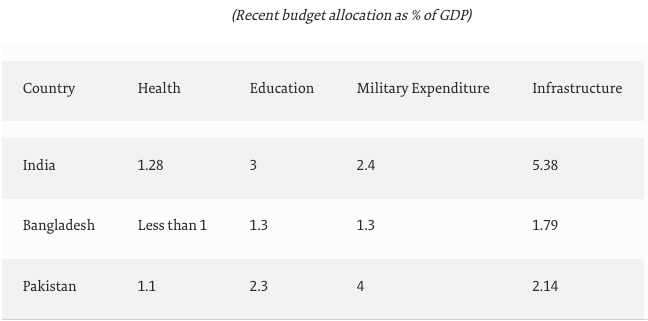UPSC Articles
INTERNATIONAL/ GOVERNANCE
Topic:
- GS-2: India and its neighbourhood
- GS-2: Issues related to Health and Governance
South Asia’s healthcare burden
Context: On May 18 this year, India recorded 4,529 deaths from COVID-19, the highest daily death toll recorded in the world after the United States in January saw 4,468 deaths.
Several things are to blame for such high deaths
- super spreader events
- Fragile health infrastructure neglected for decades
- Citizens not following health protocols
- Logistical mismanagement
As India combats the pandemic, its neighbours are experiencing spillover from the menacing second wave.
- Sri Lanka added as many as 78,218 cases in May.
- Pakistan crossed over 200 daily deaths in April, its highest since the pandemic started.
- Bangladesh’s situation is precarious, given the recent detection of the highly contagious Delta variant.
- Bhutan is the only exception, with only one death and 1,724 cases so far. The country’s success stems from a well-funded and prepared public health system with stringent measures, responsible citizenship, and an accountable government

Health issues in South Asia
- India’s health expenditure is little over 1% of India’s GDP. Public healthcare sector has been operating at a pitiful 0.08 doctors per 1,000 people (WHO Standard is 1 per 1,000)
- India has only half a bed available for every 1,000 people. Bangladesh and Pakistan fare no better, with a bed to patient ratio of 0.8 and 0.6, respectively.
- While ideally, out-of-pocket expenditure should not surpass 15% to 20% of the total health expenditure, for India, Bangladesh and Pakistan, this figure stands at an appalling 62.67%, 73.87% and 56.24%, respectively.
- While India has the world’s third-largest military expenditure, its health budget is the fourth-lowest.
- In Pakistan, even amidst the pandemic, the defence budget was increased by 12% in the fiscal year 2020-21, to $7.85 billion, while the spending on health remained around $151 million.
- Major public sector investments by the ‘big three’ of South Asia, i.e., India, Pakistan, and Bangladesh, are towards infrastructure and defence, with health taking a backseat.
Way Ahead
- South Asia can take lessons in pragmatic healthcare policy from Southeast Asia, which has prioritised investments in healthcare systems while broadening equitable access through universal health coverage schemes.
- Given the high chances of another wave or even the impending crisis of climate change, stopgap measures ought to be replaced by a well-thought-out vision and political commitment for long-term healing.
Connecting the dots :














